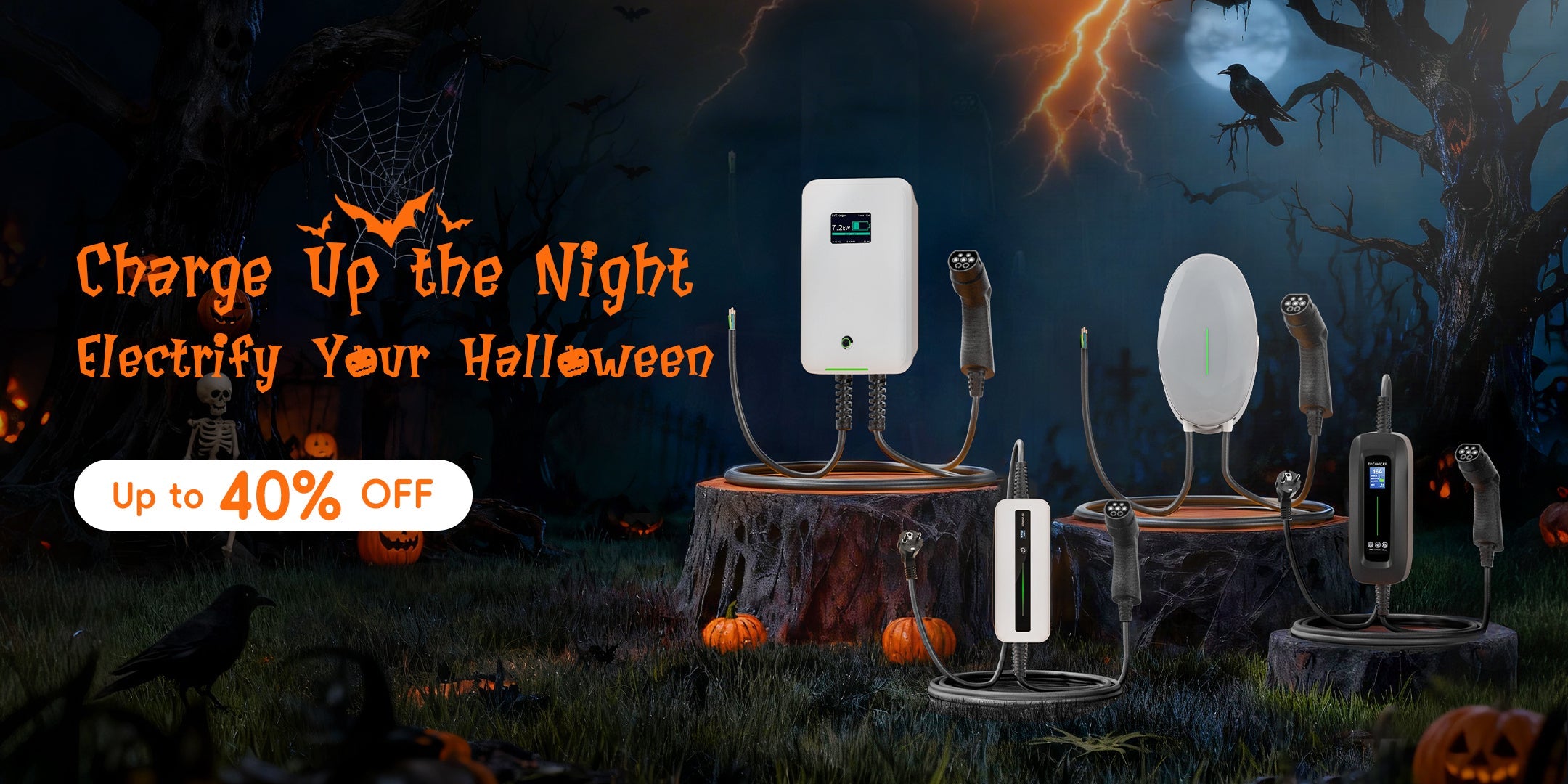As electric vehicles (EVs) become an integral part of global transportation, optimizing EV charging with renewable energy sources like solar power, wind power, and smart grids has become crucial. Europe, as a leader in environmental sustainability, is integrating renewable energy with EV charging systems, offering sustainable energy solutions that reduce carbon emissions, lower electricity costs, and enhance charging efficiency. In this article, we’ll explore how combining EV chargers with renewable energy sources can help create a greener, more efficient future.
1️⃣The Perfect Match: Solar Energy and EV Chargers
🔋Background
Solar energy for EV charging is one of the most promising renewable energy sources. As solar panel technology becomes more affordable, both homes and businesses are beginning to adopt solar-powered EV chargers. Combining solar panels with EV chargers not only provides a green energy source for EVs but also reduces electricity bills.
🔋Smart Charging Systems
Modern smart EV chargers are designed to adjust charging power based on solar energy production. For instance, during sunny days, the charger prioritizes using solar power for EV charging, while during cloudy days or at night, it switches to grid electricity. This ensures that the majority of the charging energy comes from renewable sources.
For example, Tesla’s solar roof combined with the Wallbox smart charger provides a self-sufficient energy solution, where users can charge their EVs with solar power, reducing electricity costs and promoting sustainable living.
🔋Benefits
- Lower electricity costs: Charging EVs using solar energy reduces reliance on traditional grid power, saving money on electricity bills;
- Reduced carbon footprint: By using solar energy for electric vehicle charging, users significantly reduce their carbon emissions;
- Sustainability: Solar energy is one of the cleanest sources of power, making it the ideal solution for sustainable EV charging stations.
2️⃣The Potential of Wind Energy: Providing Extra Power for EVs
🔋Background
While wind energy is typically used in large-scale power grids, small-scale wind turbines can also provide renewable energy for EV chargers, especially in areas with strong wind resources. As wind energy technology advances, wind-powered EV charging is becoming more feasible for both residential and commercial applications.
🔋Renewable Energy Integration
By combining solar and wind energy, users can ensure their EV charging needs are met consistently, even when one energy source fluctuates. During periods of strong wind, small-scale wind turbines can contribute to charging the EV, making it a self-sustaining system.
3️⃣V2G Technology: Bidirectional Interaction Between EVs and the Grid
🔋Background
Vehicle-to-Grid (V2G) technology allows electric vehicles to not only charge from the grid but also send stored energy back to the grid during peak demand periods. This bidirectional interaction helps balance the power grid and enables green energy solutions to become more effective by utilizing stored energy in EV batteries.
🔋Integration with Renewable Energy
V2G technology can complement renewable energy sources like solar and wind power by providing grid stabilization during periods of high energy demand. During times when renewable energy generation is low, EVs can feed their stored energy back into the grid, creating a more balanced energy system. And V2G Pilot Programs in the Netherlands and the UK: These countries are testing V2G technology to allow electric vehicles to feed power back into the grid, helping stabilize energy supply and further promote the use of renewable energy.
🔋Challenges and Opportunities
V2G technology has challenges such as battery degradation and charging speed, but as battery storage technology improves, V2G systems will become a crucial part of the renewable energy and EV charging ecosystem.
4️⃣Seamless Integration: Smart Grids and EVs
🔋Role of Smart Grids
Smart grids are transforming how electricity is distributed by dynamically managing energy flow based on real-time demand and supply. By integrating smart grids with EV chargers, charging times can be optimized to avoid grid overloads and ensure efficient EV charging.
🔋Integration with Renewable Energy
Smart grids can better manage renewable energy sources like solar power and wind energy by ensuring that electricity generated from these sources is used efficiently for charging electric vehicles. This leads to more eco-friendly and cost-effective charging solutions. Smart Grid Initiatives in Europe: Several European countries, including Germany and the Netherlands, are leading the way with smart grid projects that enable EVs to be charged efficiently while also supporting the integration of green energy sources like wind and solar power.
5️⃣Economic and Environmental Benefits
🔋Economic Benefits
- Lower Electricity Costs: By using solar energy for EV charging, users can significantly reduce electricity bills, especially during peak pricing periods.
- Reduced Grid Dependence: With solar and wind-powered charging, users help relieve the strain on traditional power grids, making the electricity supply more stable.
- Return on Investment: Though the initial installation cost of solar or wind systems for EV charging is high, long-term savings on electricity bills and possible government incentives provide substantial returns.
🔋Environmental Benefits
- Reduced Carbon Emissions: Charging EVs with renewable energy from solar panels or wind turbines drastically cuts down on carbon emissions, contributing to the fight against climate change.
- Promoting Sustainability: The shift towards green energy solutions for EV charging helps drive the transition to a low-carbon economy and supports sustainable living practices.
✅Conclusion
The integration of renewable energy with electric vehicle charging is critical to achieving a sustainable future. Through solar power, wind energy, V2G technology, and smart grid systems, the future of EV charging will be greener, more efficient, and ultimately cost-effective. As these technologies continue to improve, they will help create a world where EVs are charged primarily by clean, renewable energy sources, making them even more sustainable.



